Our son expressed some concern to me about the age of one of the Presidential candidates: “He’s too old– he’ll never last out his term.” He didn’t realize that I shared my birthday with two younger men whose names were familiar: infamous singer Michael Jackson and famous Senator John McCain! The day before my birthday marked the 100th anniversary of the birth of Roger Tory Peterson, the great naturalist, artist and environmental advocate who, in 1934, wrote the landmark A Field Guide to the Birds.
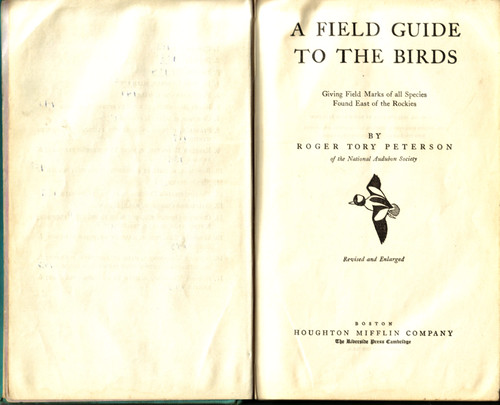
This, my first Roger Tory Peterson Field Guide to the Birds was a gift from my mother, who bought it second hand for $2.75 around 1942 when I already had an avid interest in birds. I covered it carefully with brown paper and later oilcloth. It got lots of wear. Here are the copyright and dedication pages:
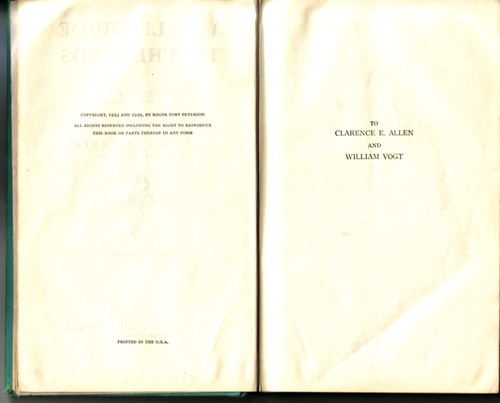
Mom’s expenditure was quite a sacrifice. According to this inflation calculator, her $2.75 would be worth $34.37 in today’s economy, but it was worth it for me, as it supercharged my interest in birding and opened the door to a lifelong hobby. This is the dedication page. It is a First Edition, revised in 1939. The first printing, of 2000 copies, sold out in less than a week.
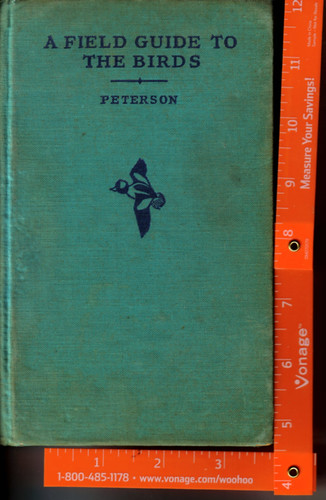
Just a half inch thick, it measured 7 1/4 by 4 1/2 inches, had 180 pages. It fit nicely into my pocket. There were 3 one-sided color plates (one is missing): the Frontispiece (illustrated below), one plate showing all the Warblers, and another packed with “Grosbeaks, Finches, Buntings, Etc.”, plus 36 glossy black and white plates and numerous line drawings. It does not have the trademark “roadside silhouettes” that would grace the inside covers of subsequent editions, though some back-lighted hawks were shown as seen flying above.
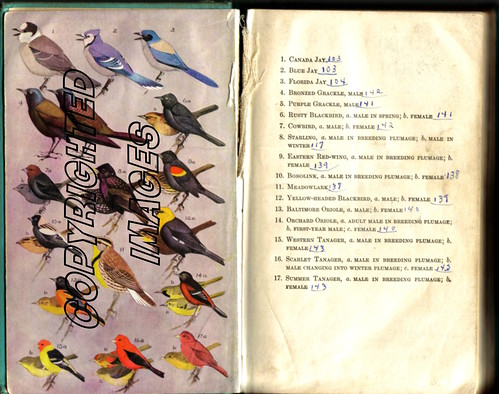
The bird illustrations were identified by species on the facing page, but I had to write in the page references to the text. In the second edition, Peterson rectified this shortcoming. Some illustrations had arrows pointing to distinctive field marks, with hand printed comments. In later editions, Peterson’s arrows were more stylistic and usually did not include comments directly on the plates. Note the bird names of that day. The grackles were later to be “lumped” together, and the Baltimore Oriole was joined with the western Bullock’s Oriole as “Northern Oriole,” only to once again be recognized as a species in its own right. (Shades of Green Heron and Wilson’s Snipe!)
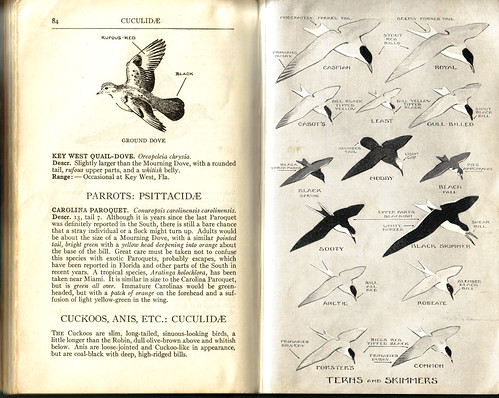
Note the arrows on the plate above, with hand printed notations next to them, pointing out distinctive field marks. This innovation revolutionized field birding, and became known as the Peterson Identification System. Up until then, many ornithologists believed that the only sure means of identification was down the barrel of a shotgun. In subsequent editions, the arrows would be stylized and the field mark explanations included in species descriptions that were printed on a facing page.
Read my review of Birdwatcher: The Life of Roger Tory Peterson
Birder’s Magazine features an anniversary interview with Lee Peterson, son of Roger.
Lee Allen Peterson and author/nature recordist Donald Kroodsman appeared this past week on the syndicated NPR program, The Diane Rehm Show. It can be heard here: http://wamu.org/programs/dr/08/08/27.php#21103












